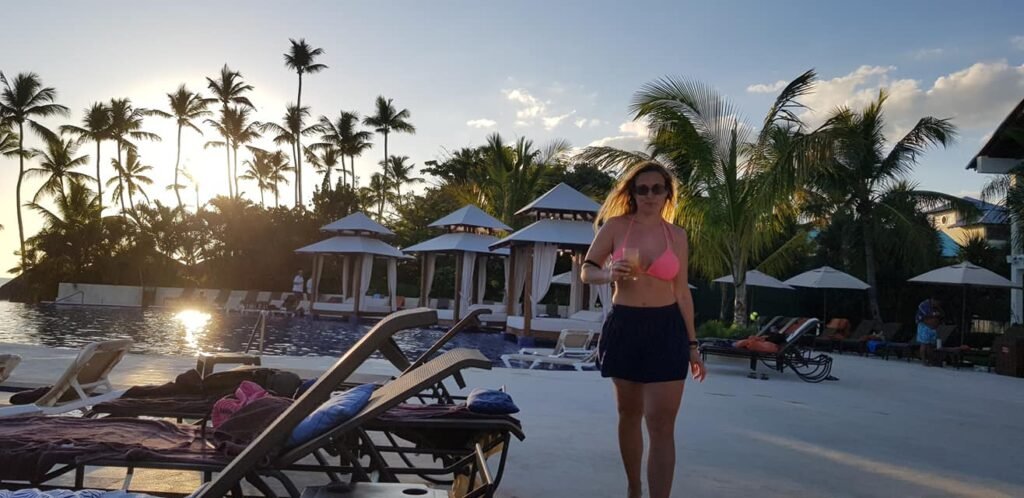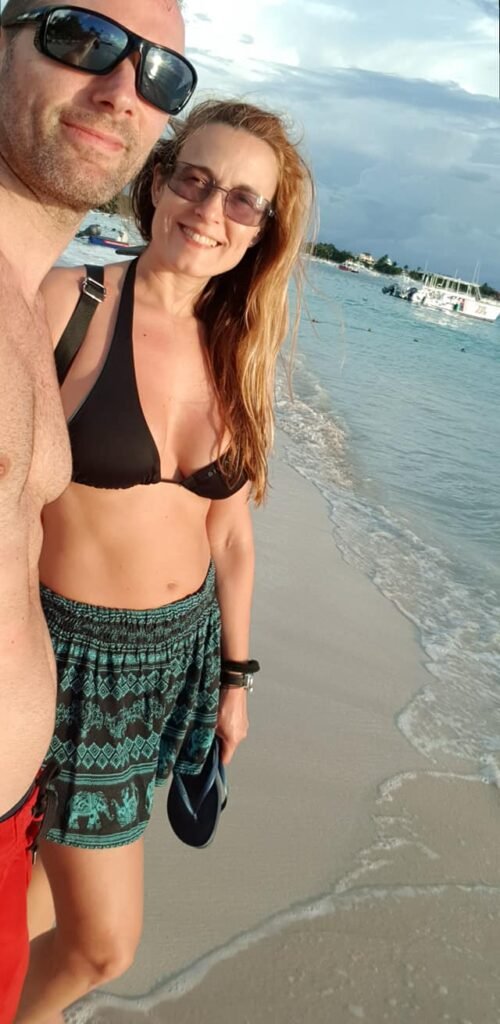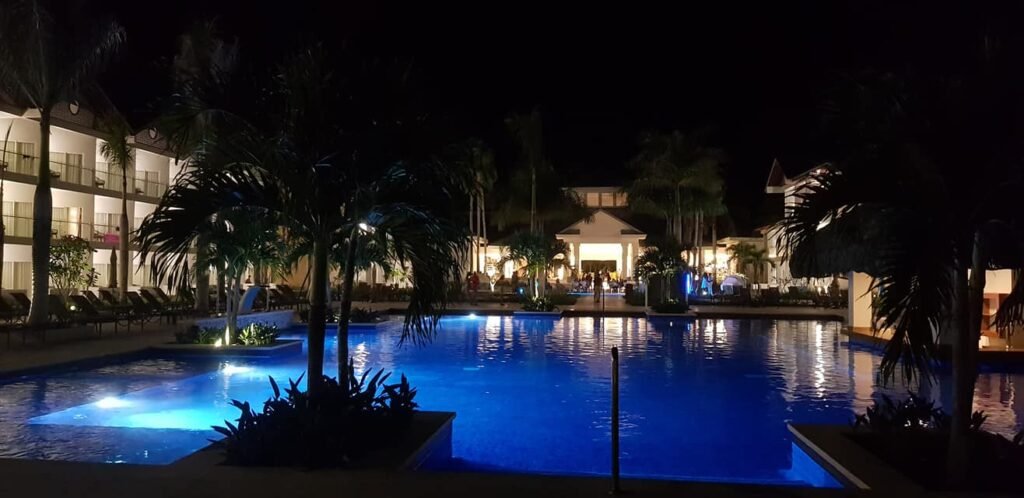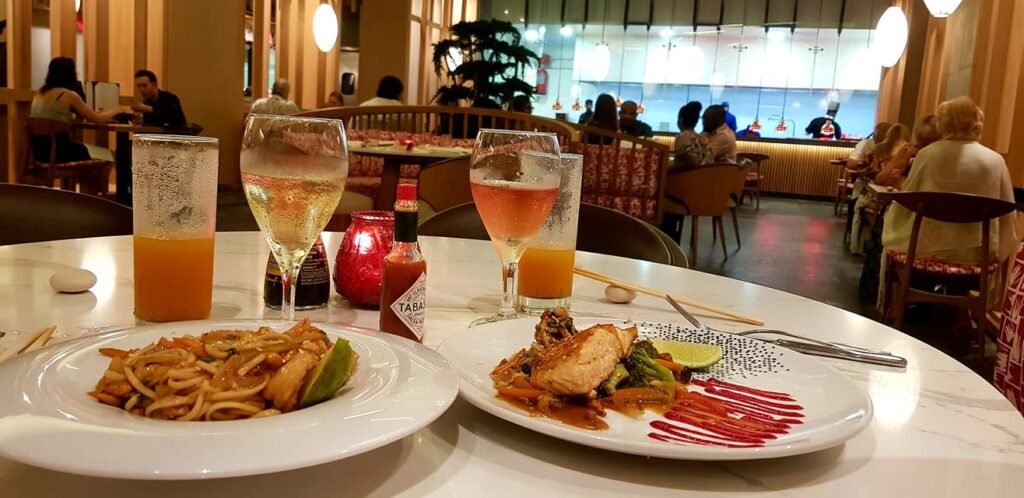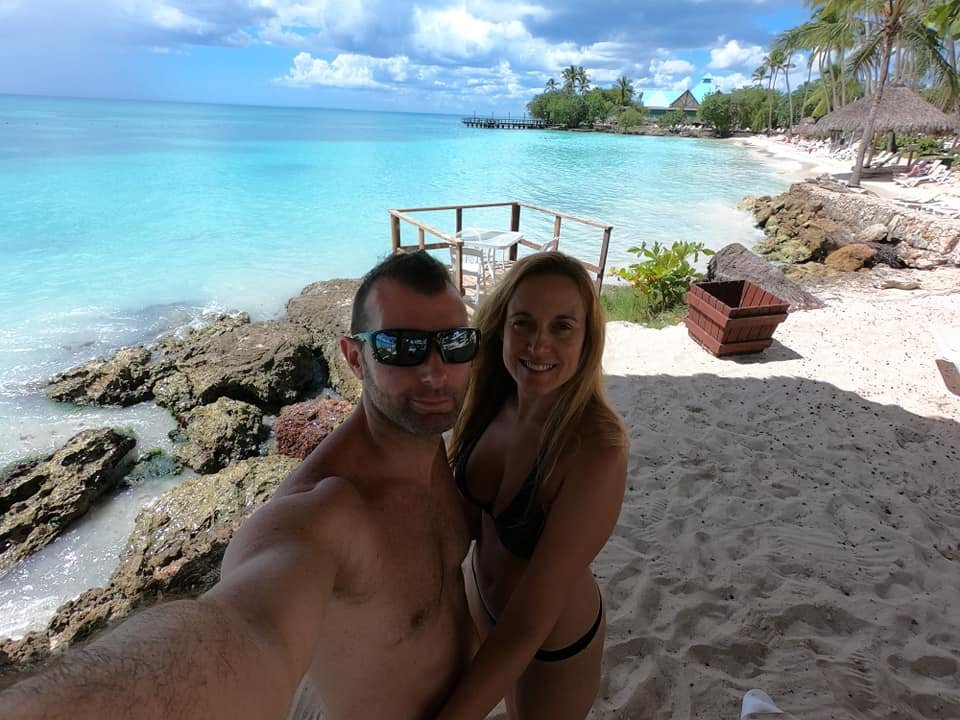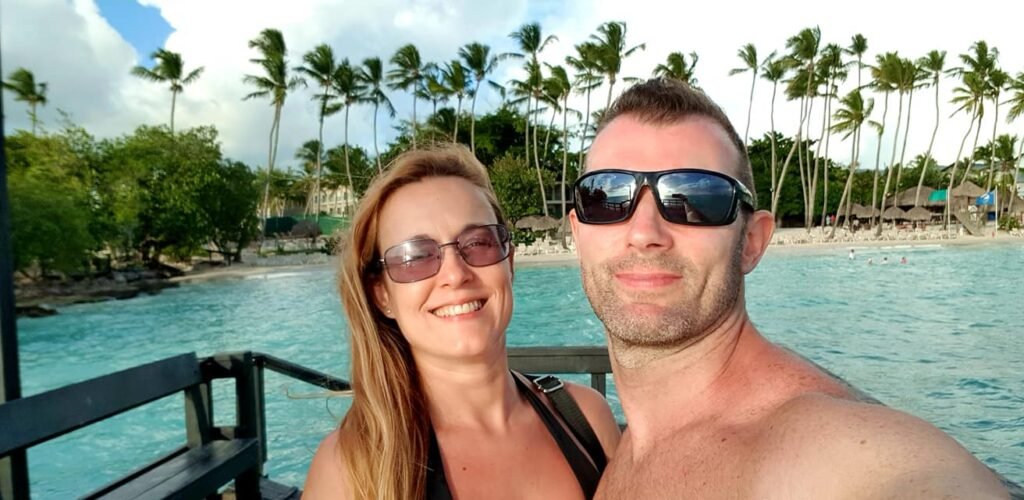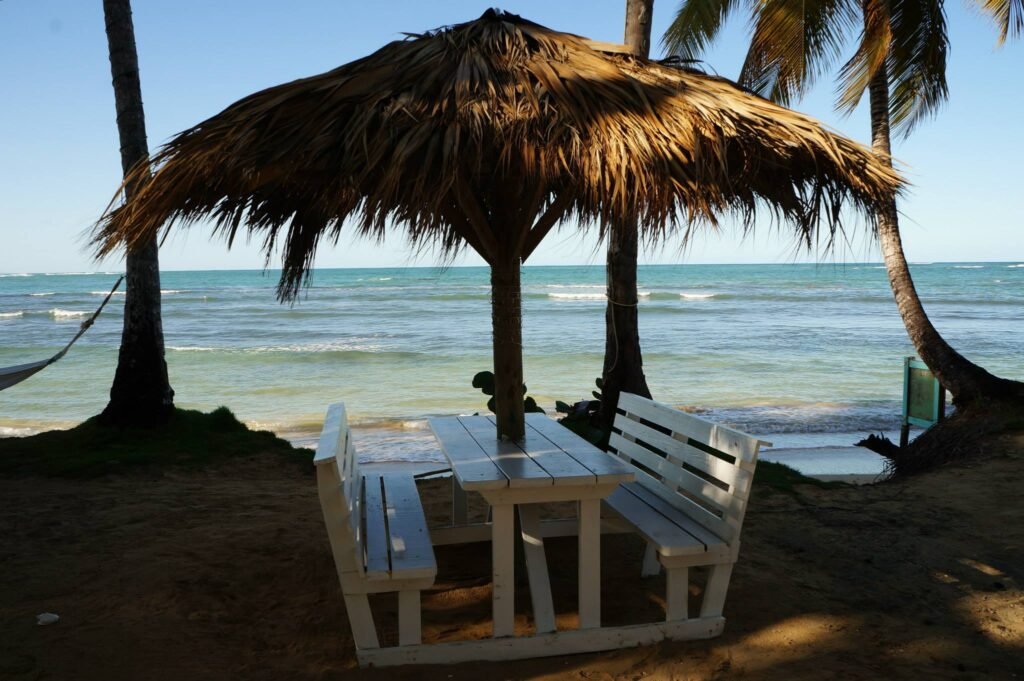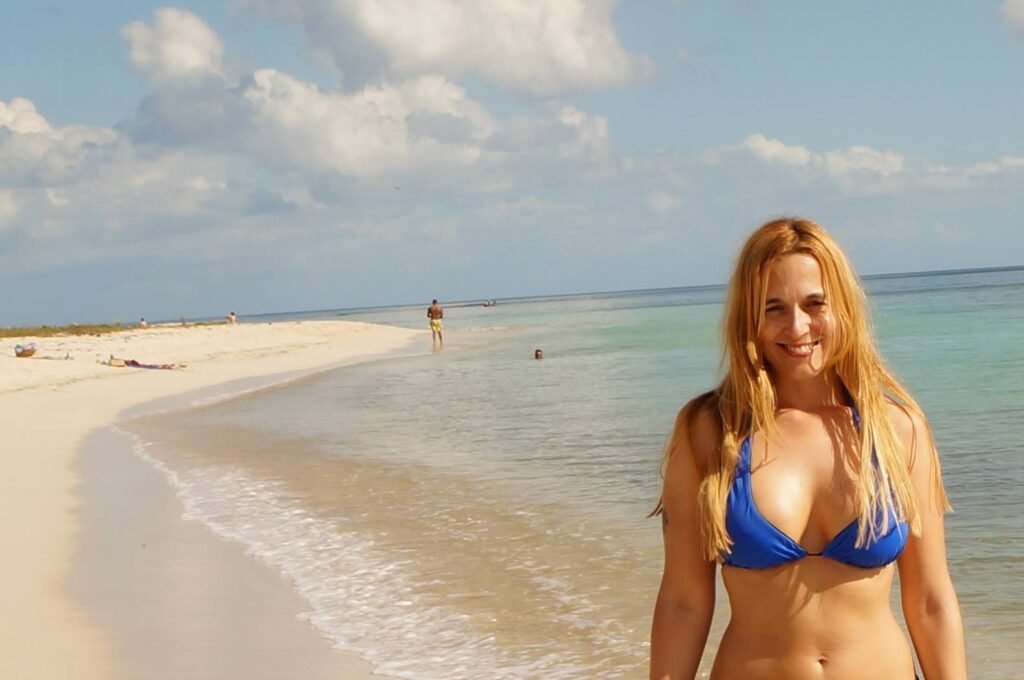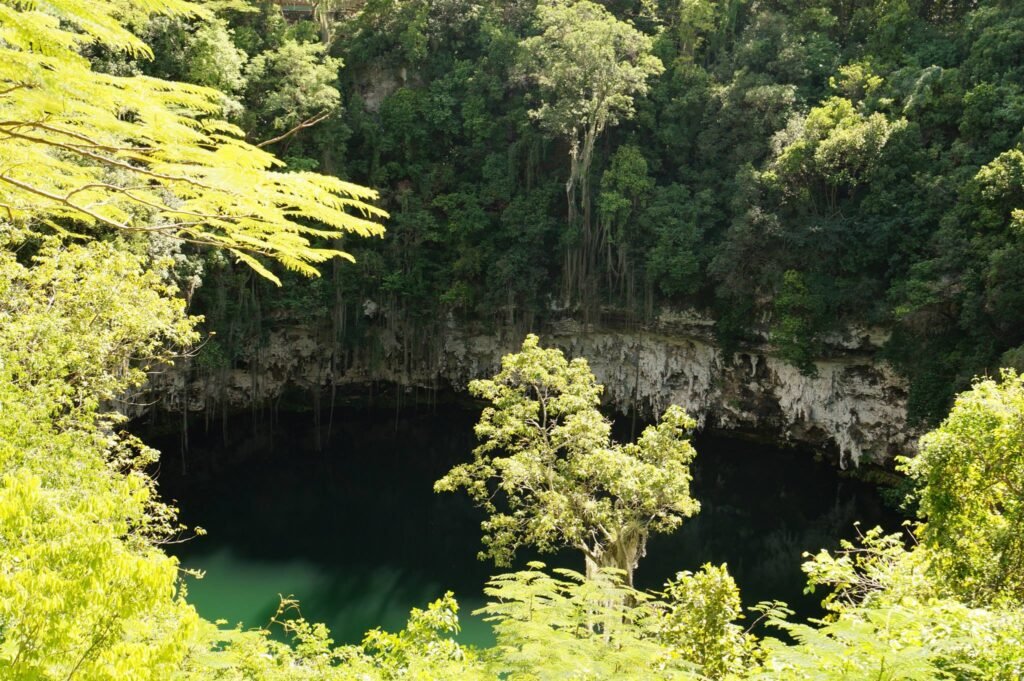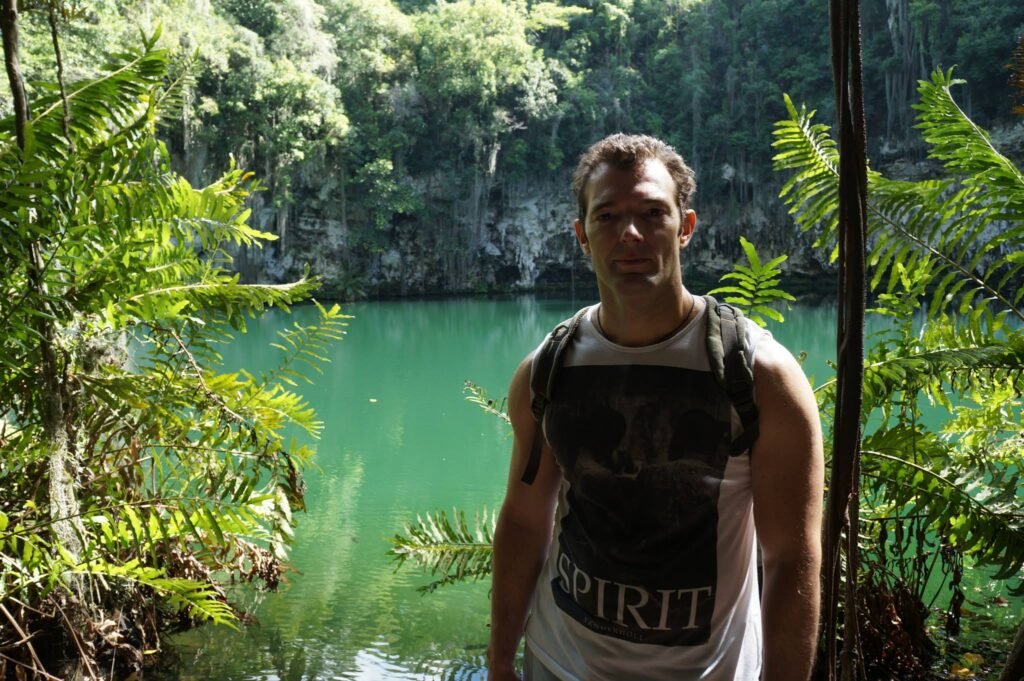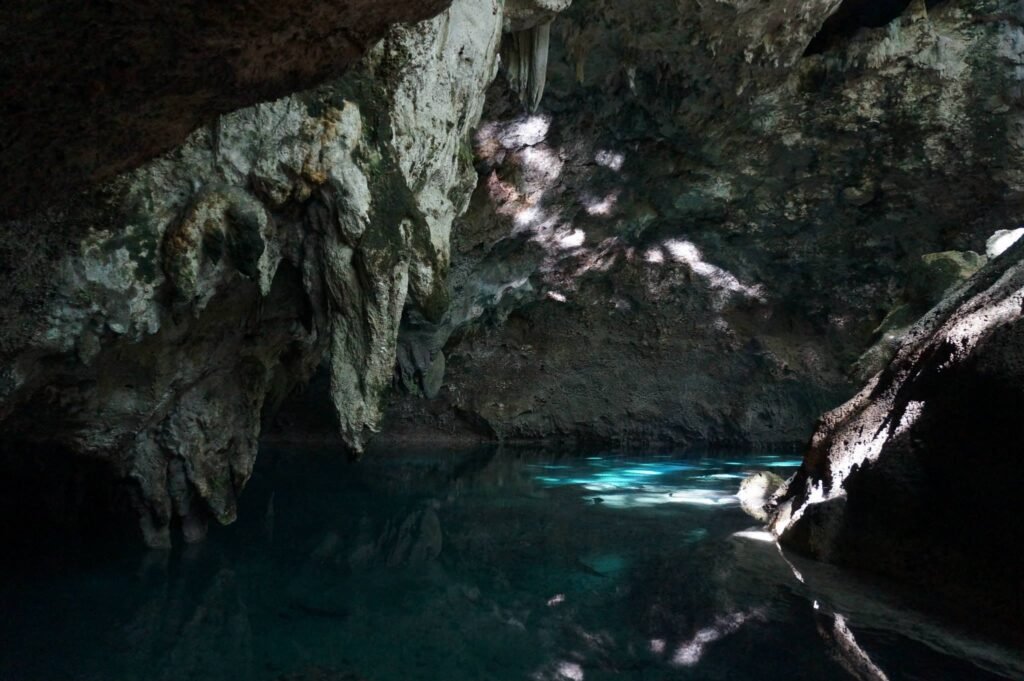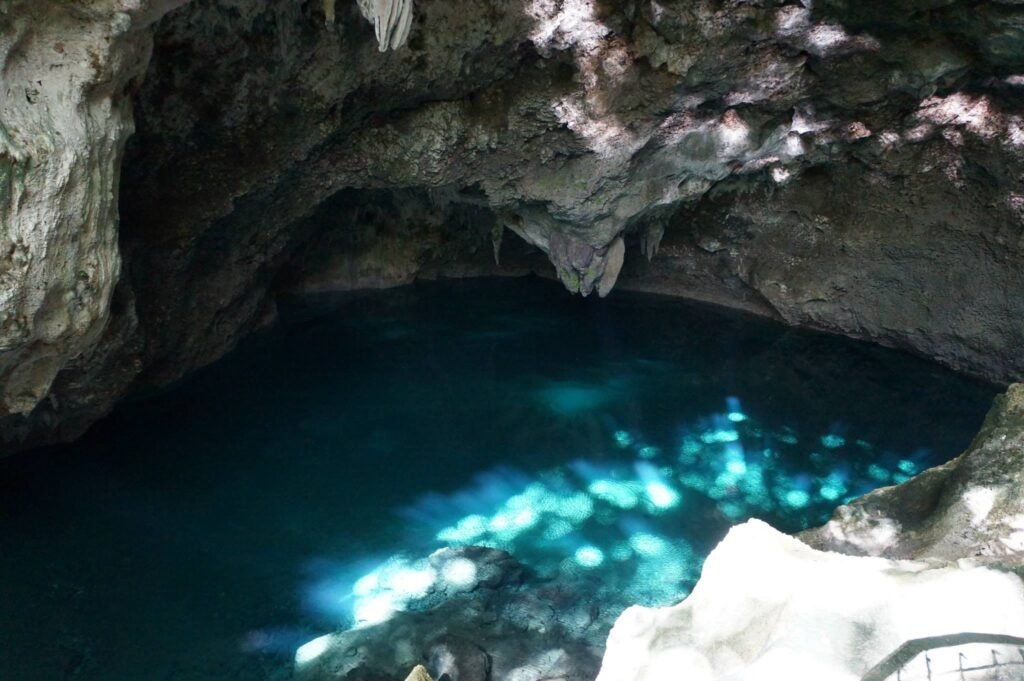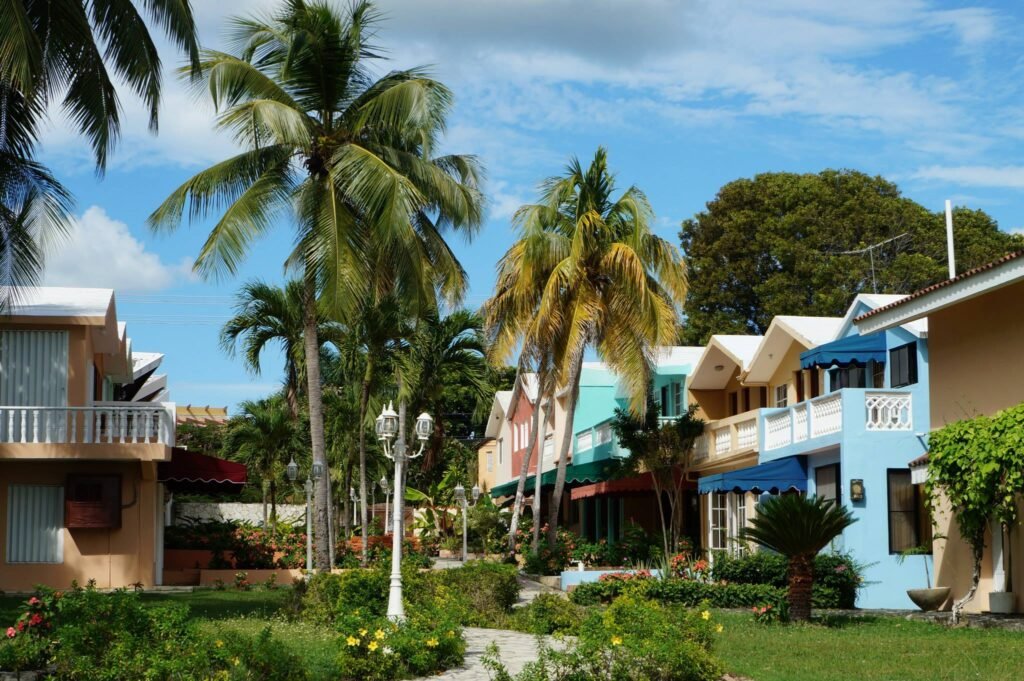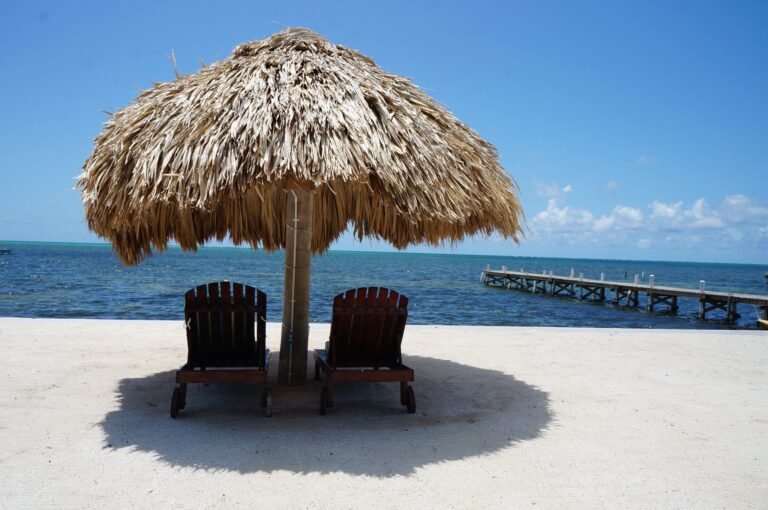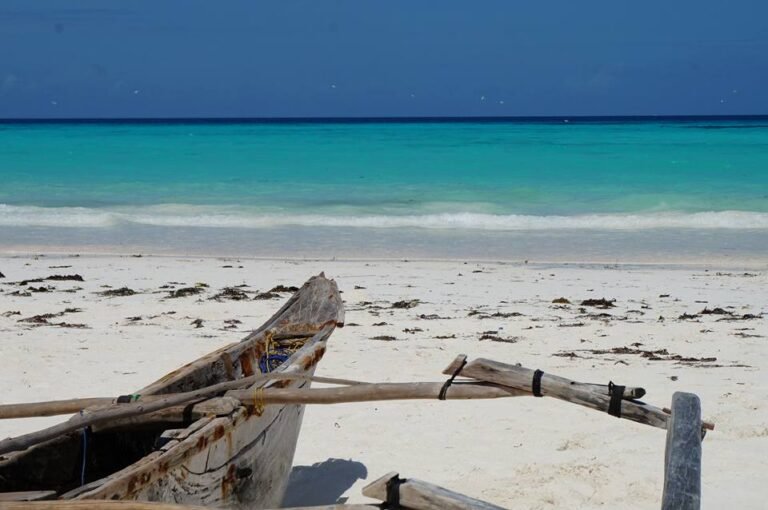The Dominican Republic is one of the best beach destinations in the world in terms of cost-benefit relation. You can find 5-star hotels with incredible infrastructure and a premium level of service at really low prices. Its all-inclusive regime and its white sand beaches are ideal to enjoy your vacations with a cocktail in your hand from the moment you get up until you go to sleep, without worrying about anything. If what you need is to rest and relax after a year of strenuous work, the Dominican Republic is one of the best alternatives in the Caribbean Sea. We share the characteristics of the region and some tips to organize your next trip!
The Dominican Republic shares the island with Haiti at the west, it limits at the north with the Atlantic and at the south with the Caribbean Sea. It has three main mountain systems, its geography consists of rugged mountains and fertile valleys. It has the highest point in the Antilles, Pico Duarte, which you can also climb if you want. The lowest point in the country is at Lake Enriquillo, 46 m below sea level. The country has abundant rivers, many of them navigable, such as the Soco, the Higuamo, the Romana, the Yaque del Norte, the Yaque del Sur, the Yuna, the Yuma, the Bajabonico and the Ozama (navigable in parts). It has a mostly tropical climate, but in high altitude areas the climate goes from temperate oceanic to semi-cold humid. On the coast the average temperatures are about 25 °C, in the highest mountains from -10 °C to 15 °C, and in other places such as the great valleys, 20 °C. In the Dominican Republic, you can find dolphins, manatees, whales and on land, reptiles, boas, birds, iguanas, lizards, American crocodiles and turtles.
The main economic activities of the country are foreign trade, services, mining, pharmaceutical industry, electronic components industry, medical equipment, tourism, textile and footwear production. The Dominican Republic is the fifth largest gold exporter in the world and the main receiver of foreign investment from Central America and the Caribbean due to its political and economic stability. It has mining deposits of gold, silver, nickel, marble, amber and larimar. Amber, one of the typical stones of the Dominican Republic, is originally a tree resin, yellow in color turned into stone that in some cases carries impressions of small animals. Larimar, is a very beautiful sky blue gemstone that is exclusively found in the Dominican Republic.
TYPICAL MEALS & DRINKS
Drinks: you can order a “fría” as beer is called in the Dominican Republic. The main brands are Presidente, Quisqueya, Bohemia and Soberana/ Being a country that produces sugar cane, they have a great variety of locally made Rums: Barceló, Brugal and Bermúdez are the most representative distilleries/ Mamajuana (this beverage is known as an aphrodisiac drink, the rum is macerated and flavored with woods and typical weeds of the area)/ Coco Loco (cocktail made with vodka, tequila, rum, lemon juice and coconut cream)/ Food: Dominican cuisine has African influences, rice is frequently cooked with meat, beans and vegetables/ Some of its most typical dishes are: Bandera –white rice, beans and stewed meat-/ Sancocho –stewed meat, vegetables, banana and yucca/ Mangú, boiled and mixed green banana with fried cheese, scrambled eggs and salami/ Mofongo, fried bananas crushed with garlic and pork rinds/ Dominican sweets made with coconut, orange, pineapple or tropical fruits/ Patacones or green banana tostones (they are crunchy fried banana pieces, really delicious)/ Beans with stewed chicken/ On the island you can find fresh avocados, tasty fishes and seafood, tropical fruits, natural juices and coconuts.
ACTIVITIES OF INTEREST
Probably if you opted for the all-inclusive regime, you will not want to leave the hotel to take full advantage of all the services and activities. The same thing happened to us, and this goes against the philosophy of exploring typical places, getting to know the country and its culture. If you are going to choose to do only one activity to get away as minumum as possible from the open bar, go visit Saona Island, it’s very beautiful.
– Isla Saona: Island of pristine waters with starfish, beaches with coconut palms and free donkeys. Read Saona Island excursion.
– Catalina Island and Parque Nacional del Este: You can see turtles, dolphins, manatees and colorful fishes.
– Punta Cana: Punta Cana, Bayahibe and La Romana are the beach areas where the largest hotel offer is concentrated. The beaches of Punta Cana are incredible, the Bavaro beach is the most popular one.
– Bahía de las Águilas: Rock formations on the green sea, a quite virgin place with an important wealth of marine life.
– Cayo Levantado and Samaná Bay: There you can watch whales, which mate between January and March.
– Hoyo Azul Cenote: A very beautiful cenote with clear waters.
– Visit Barcelo, Brugal or Bermúdez Rum Distilleries.
– Cayo Arena: Dazzling key to go by boat and spend the day.
– Frontón and Rincón Beaches: Two really remarkable beaches that are worth visiting.
– Take salsa and bachata classes: If you want to take with you a very special memory of the Caribbean and get a little deeper into its culture, go ahead and learn to dance salsa and bachata. At least if you get to incorporate the basic steps, you will feel the spirit of the Dominican culture in your body.
– Tres Ojos National Park: It’s a cenote near the city of Santo Domingo with caves. To protect the fish and the integrity of the water, they do not allow bathing.
– Altos de Chavón: It is a 16th-century Mediterranean-Italian style villa built on a hill above the Chavón River. It has an incredible amphitheatre, the area was the scene of many movies. There is a famous design school in Altos de Chavón.
– Cave of Wonders: You can see stalactites, stalagmites and cave paintings.
– Los Haitises National Park: In this park, you will be able to appreciate nature, thick mangroves, translucent waters, rock formations (mogotes) that emerge from the sea, caves full of birds such as the Cueva del Ángel, and pre-Columbian pictographs.
– Enriquillo Lake: There are pink flamingos and iguanas.
– Isla Cabritos National Park: It has one of the largest wild reserves of crocodiles.
– Jarabacoa: It’s a very attractive area to see pine forests and waterfalls. You can go rafting on the river and climb the mountain.
– Ocean World Park: To see dolphin, shark and sea lion shows.
– Colonial City of Santo Domingo: You can visit the cathedral, go to museums, eat in excellent restaurants, see the botanical garden and the boardwalk, a typical promenade. If you visit the capital you must be more careful with security because there is a higher crime rate.
– Las Terrenas: It’s a less popular area with beaches. Although we like the places farthest from the crowd, the quality of the beaches located in Punta Cana and Bayahibe is much higher.
– Dominicana offers tourists golf championships, mountain sports, biking trails, reefs for snorkeling and diving, ideal places for kayaking, stand up paddleboarding, sailing and surfing. There is a wide variety of activities for all tastes.
DOMINICAN CULTURE
It’s the tradition of the Dominican to offer the first drink of rum to the deceased, for this reason as soon as a bottle is opened the first drink is poured on the floor. This even happens on some Dominican-flag planes, so don’t panic if you see the flight attendant throw rum on the carpeted floor of the plane.
In the Dominican Republic, crafts are made with wood, coconut, clay and stones. His national sport is baseball. Carnival is very important in its culture too, as well as dance and music. Cockfighting is a popular tradition that takes place in Las Galleras, they are legal and regulated. The Dominican Association of Gallic Clubs sometimes claims illegal fights. On many occasions, roosters are fitted with artificial spurs made with thorns, hawksbill shells, steel or plastic. The roosters compete for age, the non-fighters lose, the one-eyed fights against each other or against lighter roosters so the fight is fair. Women do not usually participate in these events because they sometimes fight between drunk gamblers even with knives.
NOTES
– Souvenir: If you want typical souvenirs from the island, buy jewelry made with Larimar stone, cigars and local rum.
– Bring mosquito repellent to protect yourself from their bites and possible associated diseases.
– If it’s difficult for you to control what you eat and maintain a healthy weight, we recommend avoiding the all-inclusive meal regime because surely, in addition to the souvenirs, you will take 3 or 4 extra kilos with you. Maybe you can make the reservation in another type of accommodation and on the last day, go to the all-inclusive hotel to live the experience.
HISTORY
Before the arrival of Columbus and the Spanish, the Taino Indians and the Caribs inhabited the Dominican Republic. Christopher Columbus arrived on the island on his first trip on December 5, 1492, giving it the name of La Española. Believing that Europeans were somehow supernatural, the Taínos welcomed them with all honors, treated them with kindness, and provided whatever they wanted. The Spanish saw them as weak, they mistreated them and even took their wives. Clashes were generated that ended with Spaniards enslaving locals to work in the gold mines. Later, African slaves were imported and put to work for the sugar elite on the sugar cane plantations. In Santo Domingo in 1522, enslaved Muslims led an uprising on the sugar plantation of Admiral Don Diego Colón, son of Christopher Columbus. Many of these “insurgents” managed to escape to the mountains where they formed Maroon communities. By the 1530s, maroon gangs had become so numerous that in rural areas, Spaniards could only safely travel outside their plantations, in large armed groups.
By the 1540s, the Caribbean Sea had been invaded by English, French and Dutch pirates. With the conquest of the American continent, La Española declined rapidly. Most of the Spanish settlers left the island for the silver mines of Mexico and Peru. Both the native inhabitants and the descendants of slaves from Africa were left in poverty. Later, they received Canarian immigrants, they suffered the military occupation of Haiti (1822 – 1844), they suffered the occupation of the United States and dictatorships until they reached the Republic that governs today.
| Capital | Santo Domingo |
| Vaccines | – It’s recommended to have vaccines for: Typhoid fever, hepatitis A, hepatitis B, rabies, TDaP (tetanus, diphtheria and whooping cough), cholera, flu, pneumococcus, triple viral (measles, rubella, mumps) and influenza. – There is a risk of malaria and dengue in rural areas, so appropriate measures must be taken against mosquitoes. – Travelers from endemic areas of yellow fever are required to have a vaccination certificate. |
| Time | Check the time in the Dominican Republic at 24 Time Zones. |
| Exchange | Check the USD / DOP exchange rate at The Money Converter. |
| Language | Spanish |
| Currency | Dominican Peso (DOP) |
| Transportation | – Since 2015 there is Uber in Punta Cana so it’s a good alternative if you are not going to move almost from the hotel. – You can also rent a motorcycle or a car if you want to travel around. – The Santo Domingo Metro is one of the mass transit systems in the country, together with the cheap bus system that have stations in most of the big cities. There are also Public Cars called “Conchos”, which are actually private vehicles that travel a specific route on a daily basis, in which passengers can choose the stopping point. They are quite crowded. |
| Temperature / Climate | – Minimum temperature 18 °C / Maximum 33 °C – Bayahibe has a tropical savanna climate. It’s hot every month, both in the dry and wet seasons from May to November. – The hurricane season is set from June 1 to November 30, with August and September being the months with the highest probability. The majority of the years are strong storms that come to hit the island with a duration between 1 and 3 days. The last hurricanes that directly impacted the Dominican Republic were George in September 1998 and Jeanne in September 2004. |
| Religion | 50% of Dominicans are Catholic, follow by Evangelicals and atheists. In addition, you can also find religions such as Buddhism, Judaism, Islam or the traditional Chinese religion, among others. |
| Politics | Representative democracy, through which the President of the Dominican Republic is both Head of State and Head of Government, and of a multi-party system. The executive power is exerced by the government. Legislative power resides in the two houses of Congress. |
| Visa | Argentina and Uruguay, for example, do not require Visa. Some countries pay 10USD for the business card. Check at the embassy, the current visa conditions for your country. |
| Airport | PUJ (Punta Cana Airport) |
| Music | Salsa / Bachata / Merengue / Jazz |
| Plugs | Type A / B (Two rectangular parallel legs with and without a third leg) |
| Population | 10,740,000 (year 2019) |



